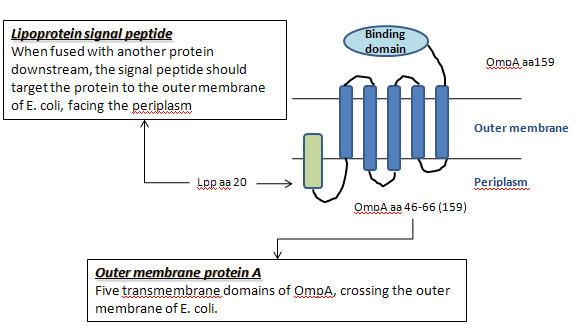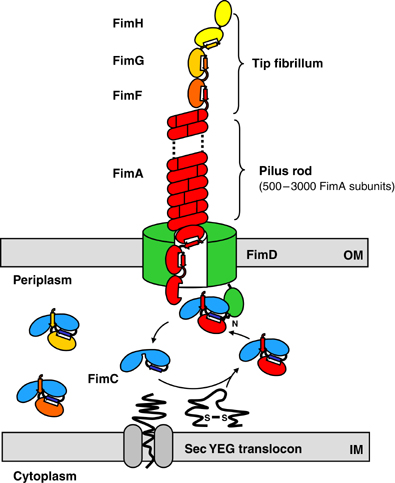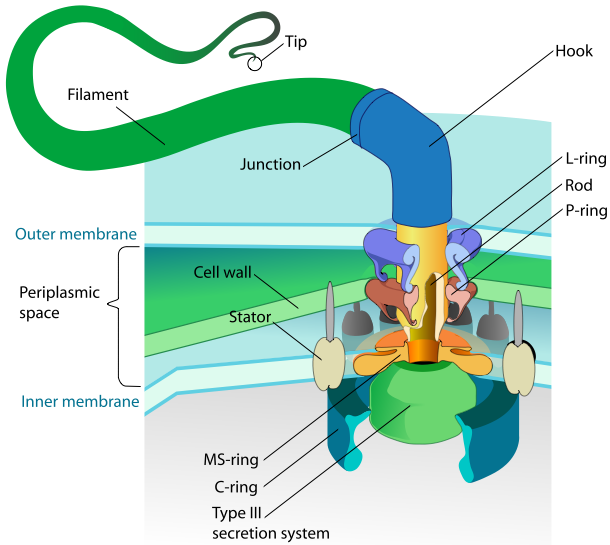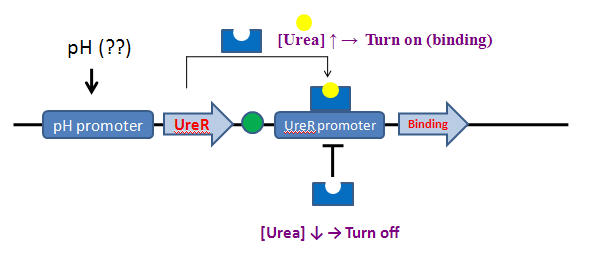Team:NYMU-Taipei/Project/Attachment
From 2008.igem.org
Revision as of 17:39, 1 August 2008 by Blackrabbit (Talk | contribs)
| Home | Project Overview: | pH Sensor | Attachment | Time Regulation | Waste Removal | Experiments and Parts | About Us |
Contents |
Motivation
- E. coli is a bacterium that commonly lives in the intestines of people and animals.
Goal
- When genetic E.coli senses the alternation of pH in intestine, the adhesion mechanism will be turned on in order to enhance the ability of attachment.
- The enhanced adhesion will make a chance for genetic E.coli to have more time to do things that has been designed by the "Clearance of Urea, Phosphate, and Guanidine" groups.
- To cooperate with the "Time Regulation" group to allow the genetic E.coli to detach from intestinal epithelia cells after a specified amount of time.
How to attach in intestine
- We have two strategies to enhance attachment in intestine: Expression of membrane form of FimH and FliC.
- We will use the biobrick part!
- [http://partsregistry.org/Part:BBa_J04500 BBa_J04500]. a composite part of a lac promoter (R0010) and a strong ribosome binding site (B0034).
- [http://partsregistry.org/Part:BBa_J36835 BBa_J36835]. Lpp, the lipoprotein signal peptide.
- [http://partsregistry.org/Part:BBa_J36837 BBa_J36837] or [http://partsregistry.org/Part:BBa_J36838 BBa_J36838]. OmpA, one (O1) or five (O5) transmembrane domains, respectively. Both have been shown to work (Earhart, 2000).
- [http://partsregistry.org/Part:BBa_J36841 BBa_J36841] or [http://partsregistry.org/Part:BBa_J36843 BBa_J36843]. Streptavidin, either wild-type "SW" (Howarth, 2006), or single-chain dimeric "SD" (Aslan, 2005).
What is FimH?
|
What is FliC?
|
Circuit Design
References
- Functional characterization of the FimH adhesin from Salmonella enterica serovar Enteritidis[http://mic.sgmjournals.org/cgi/content/full/152/5/1337?view=long&pmid=16622051]
- Combining sites of bacterial fimbriae [http://www.sciencedirect.com/science?_ob=ArticleURL&_udi=B6VS6-4PGPKS8-2&_user=1576506&_rdoc=1&_fmt=&_orig=search&_sort=d&view=c&_acct=C000053839&_version=1&_urlVersion=0&_userid=1576506&md5=33dfc6974f43b7ece79e0e7b90044ee7]
- Probing the receptor recognition site of the FimH adhesin by fimbriae- displayed FimH-FocH hybrids[http://mic.sgmjournals.org/cgi/reprint/144/7/1919?view=reprint&pmid=9695925]
- Host Protein Binding and Adhesive Properties of H6 and H7 Flagella of Attaching and Effacing Escherichia coli[http://jb.asm.org/cgi/content/full/189/20/7426]
- Sequence Diversity of the Escherichia coli H7 fliC Genes:Implication for a DNA-Based Typing Scheme forE. coli O157:H7[http://jcm.asm.org/cgi/reprint/38/5/1786.pdf]
 "
"





